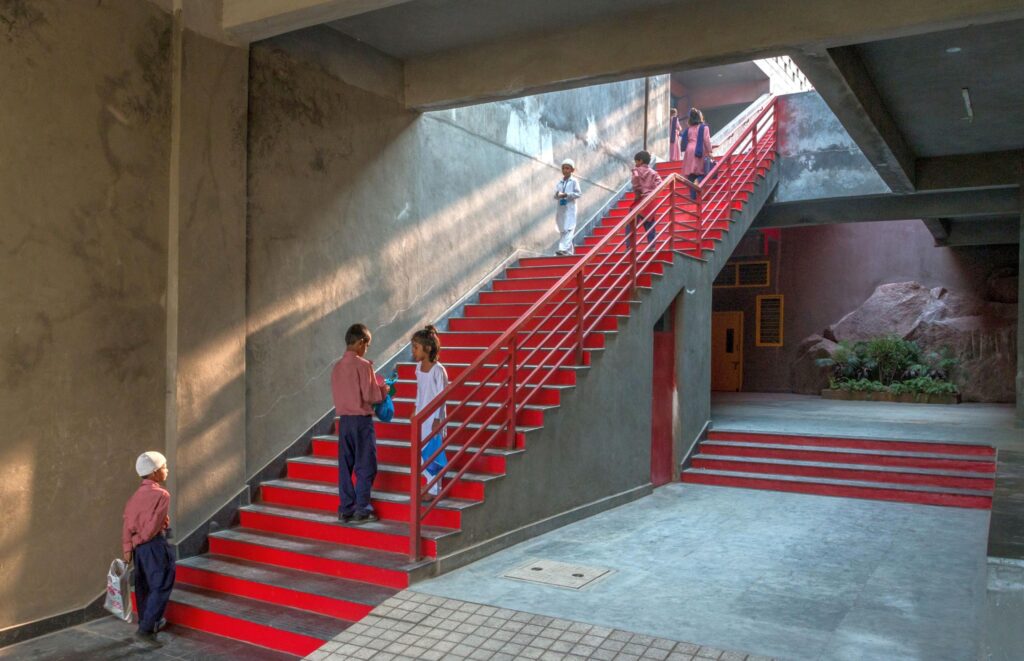
Location: Golconda, Hyderabad, India | Typology: Educational (School) | Built-up Area: 20,000 sqft | Site Area: 3,000 sq yards
Hilltop School: The Journey
A zakat-run school had been functioning out of a large makeshift warehouse for four years. The site is located on a hill top, in the unplanned settlement within the walls of the majestic Golconda Fort in Hyderabad.

As funds were gathered for a school building, the neighbouring parcel of land was acquired, and the school was designed. From the very early stages, the school was planned with an aim to cause minimal intervention and damage to the existing terrain and the hundreds of millions of years old rock formations of the Plateau on which the Golconda Fort sits, a nexus between the natural and built heritage of Hyderabad. Designing a low-energy building was of utmost importance, not only to reduce environmental impact but also to bring down running costs in the future. Passive cooling techniques were introduced through elements just as screen walls and the entire building in naturally-ventilated from the periphery and the skylight. Atriums run vertically through the length of the building to bring in light from above and pay homage to the courtyard that is a motif of all the houses around the school.
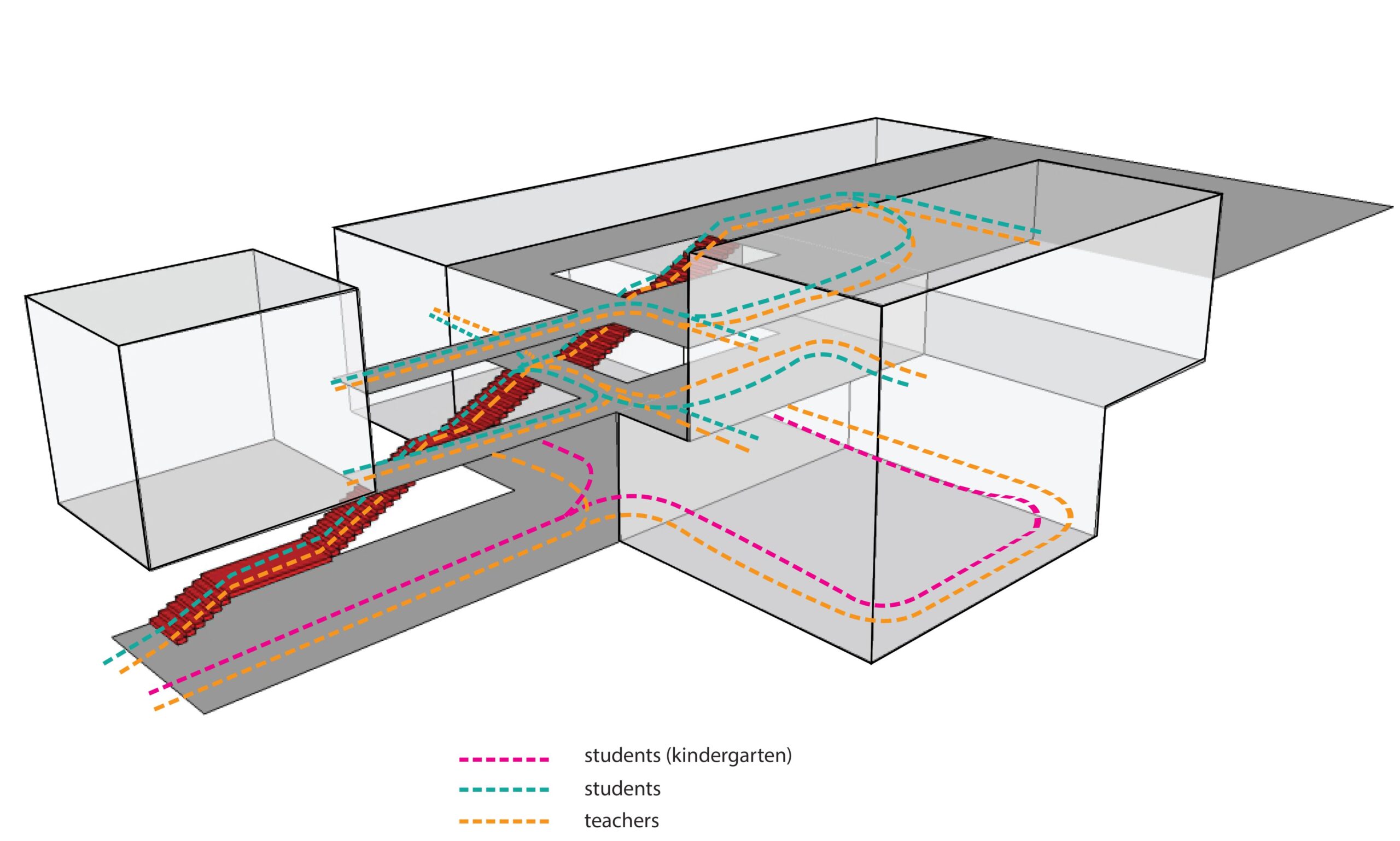
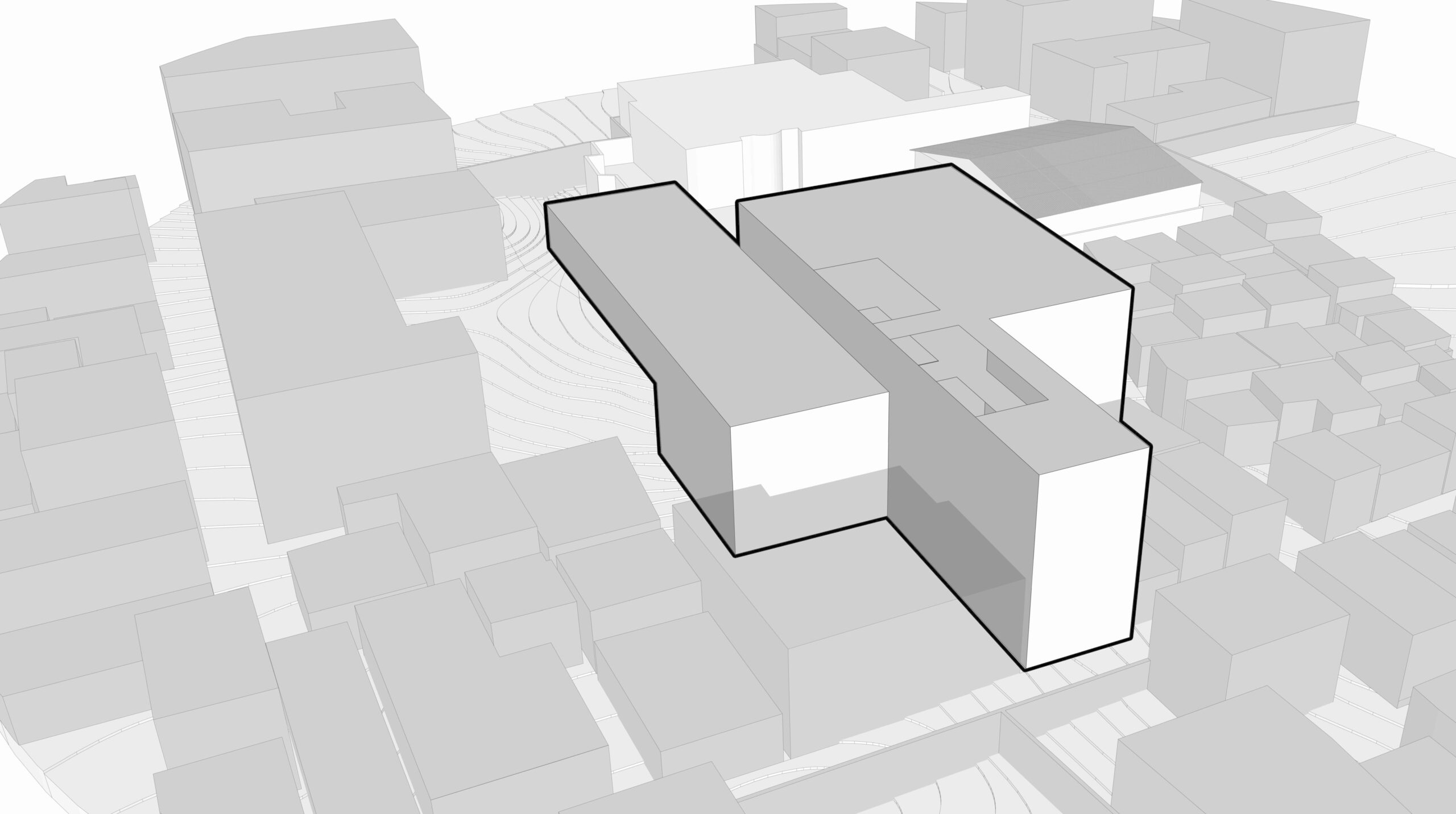
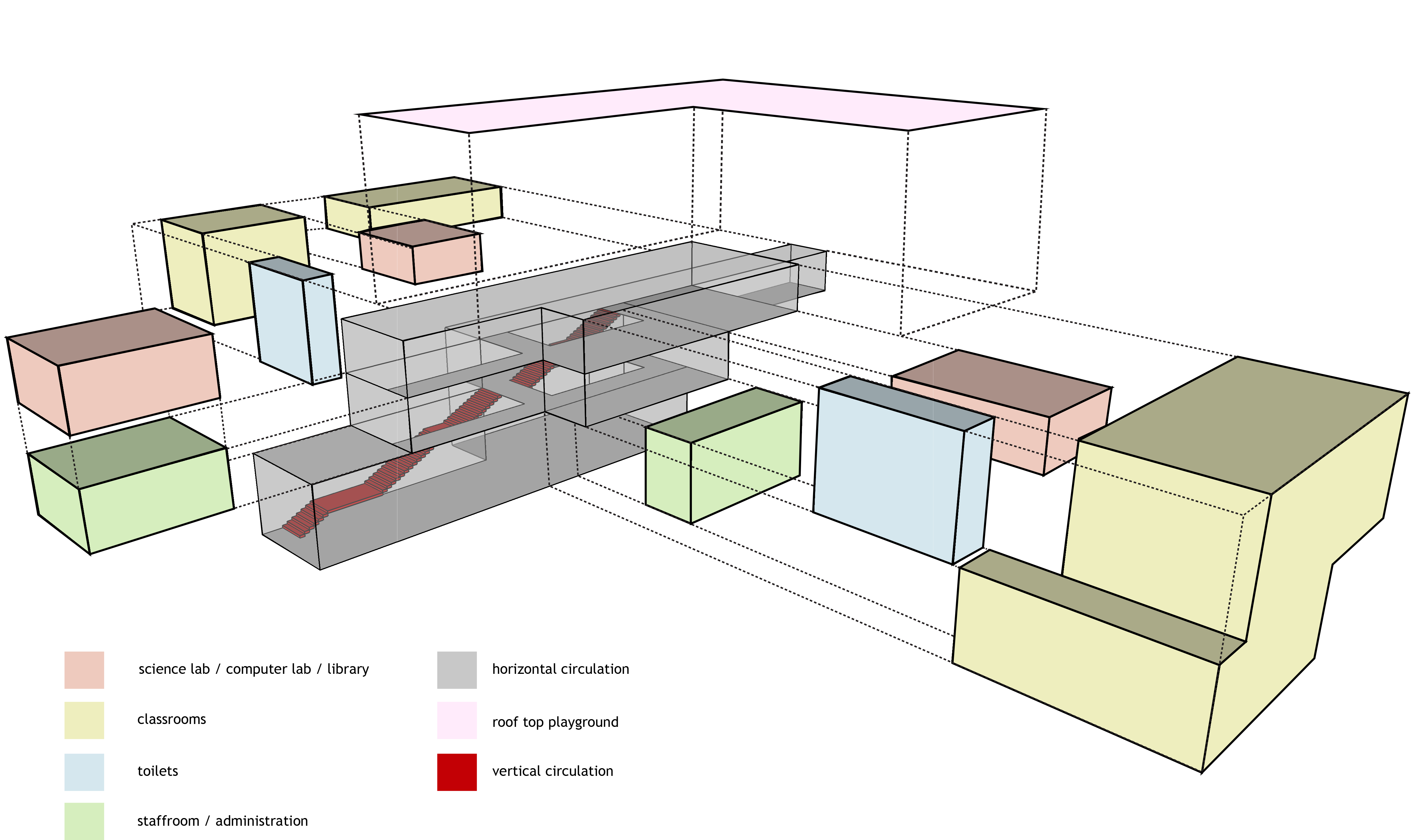
The existing school was just a large warehouse with partitions for classrooms and was a very dark, cramped and uninspiring space, not at all how a school should be, but unfortunately, how charity schools generally are. We wanted to design bright and fun spaces, which would encourage learning and growth. There was a deliberate and necessary effort to retain the upper playground as an open space by not building over it, which is a rare green lung space in the heart of the low-rise, high-density, unplanned neighbourhood. Students were conditioned to informal learning under trees and over boulders, and we wanted the school to provide space for similar activities alongside a structured learning environment.
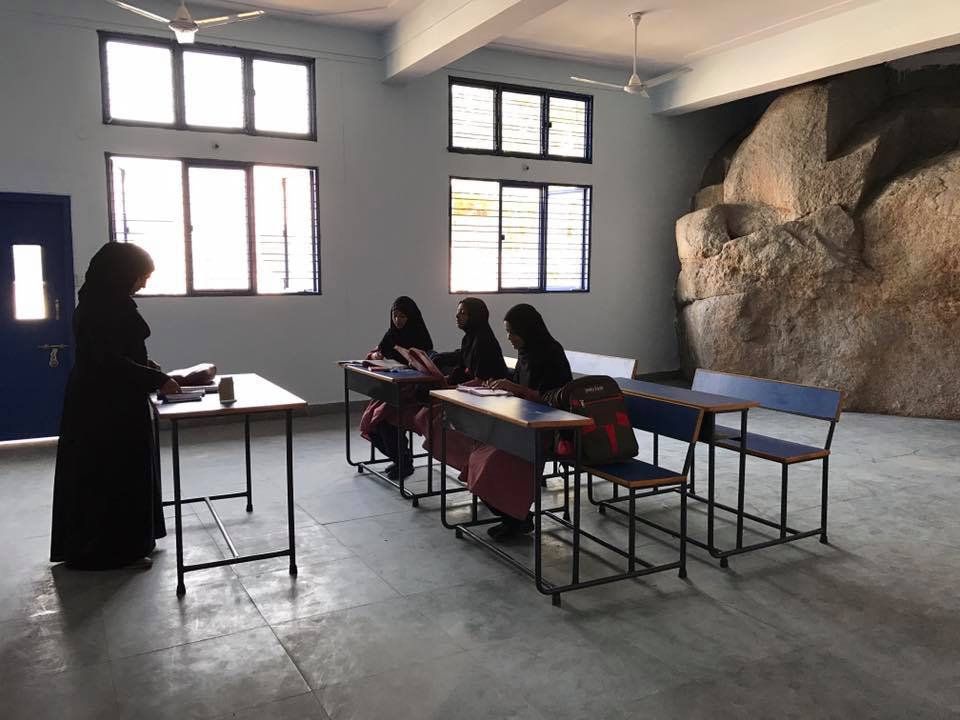

Articulating the peculiar and difficult topography of the site and its surrounds posed a major challenge due to proximity to heritage structures and tight urban context, most of which is residential courtyard houses with shared walls. The site itself was naturally sectioned into two parts by a cliff, forming a wall of sheet rock: one part of the site lay 20’ above the other. The school is situated in such a way that it engulfs the rocks within it. Rocks were taken into the building, forming the walls of some classrooms and creating level differences and stepped seating on the floor of the library, which becomes an informal space, conducive to discussion, reading, sharing and group learning, unlike the strict formal setup of regular school libraries.
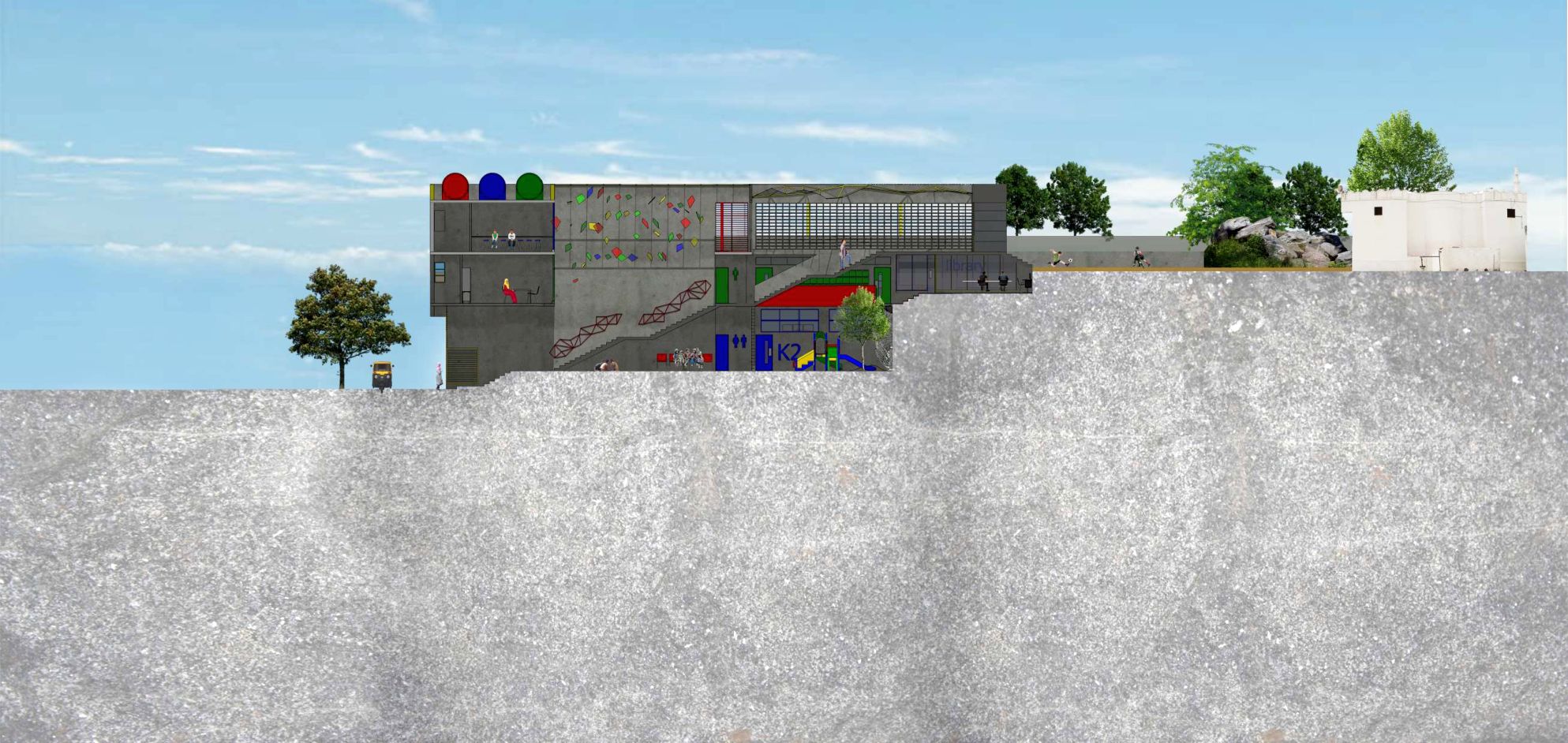
The surrounding context is colourful and kitschy, consisting of self-designed, self-built houses with walls of bright blue, pink and yellow. The school façade is intentionally non-descript, clad with locally-quarried slate to deliberately negate colour in contrast to the neighbouring houses. The common spaces are left raw and unfinished with exposed cement-plastered brick walls, primarily to reduce the need for maintenance in the future life of the building, considering that it is a charity school. And yet, the bright colour palette of the context is mimicked in the staircase, gates, doors, windows, grilles and skylight. Red, blue, yellow, green and orange create pops of colour as accents in contrast with the grey of the concrete. The same colours reappear in subtle pastels in the classroom interiors, colour-coding the classrooms and reminiscent of the children’s own homes. The bare walls of common spaces are slowly being filled with art by the students themselves, as a stamp of their ownership over their school.
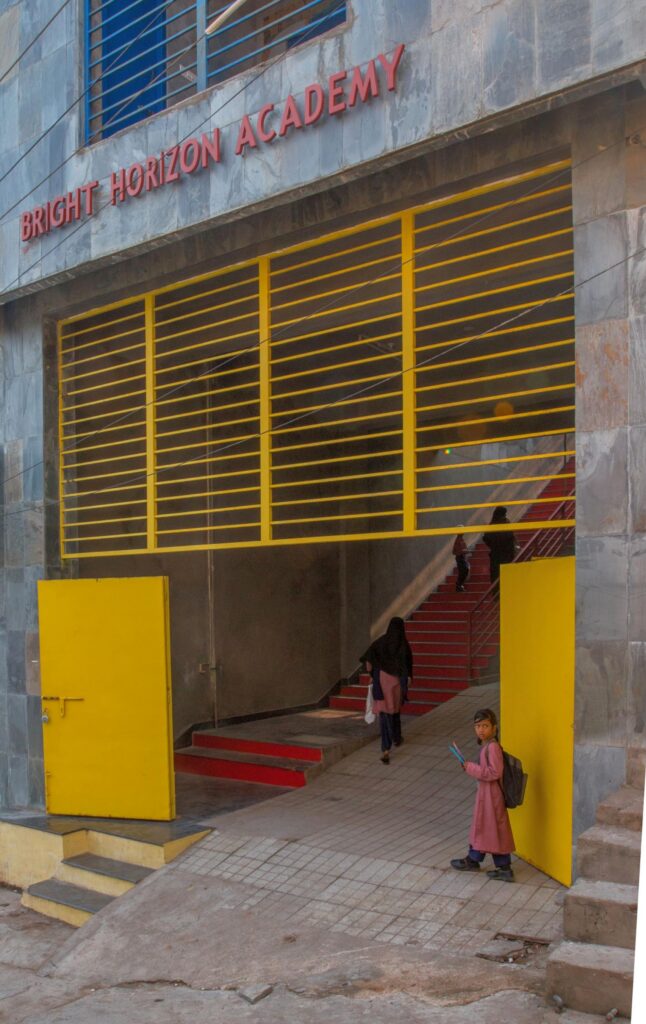
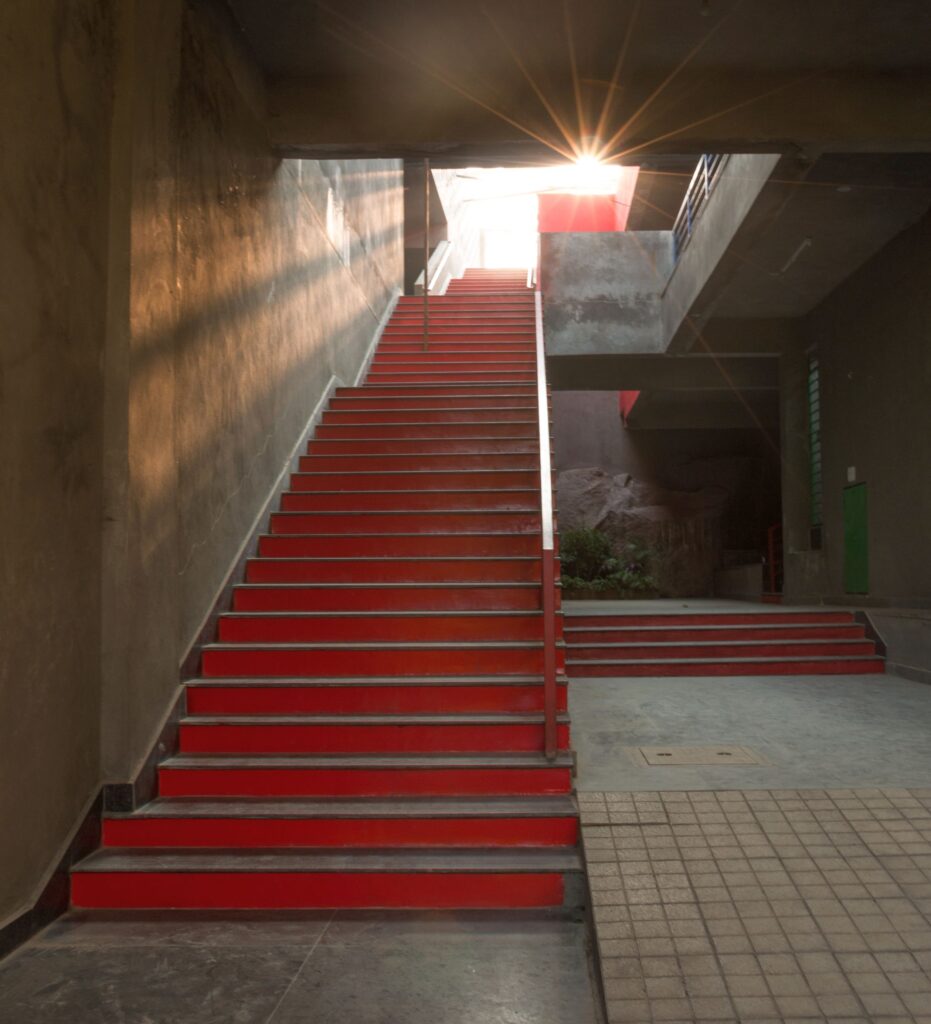
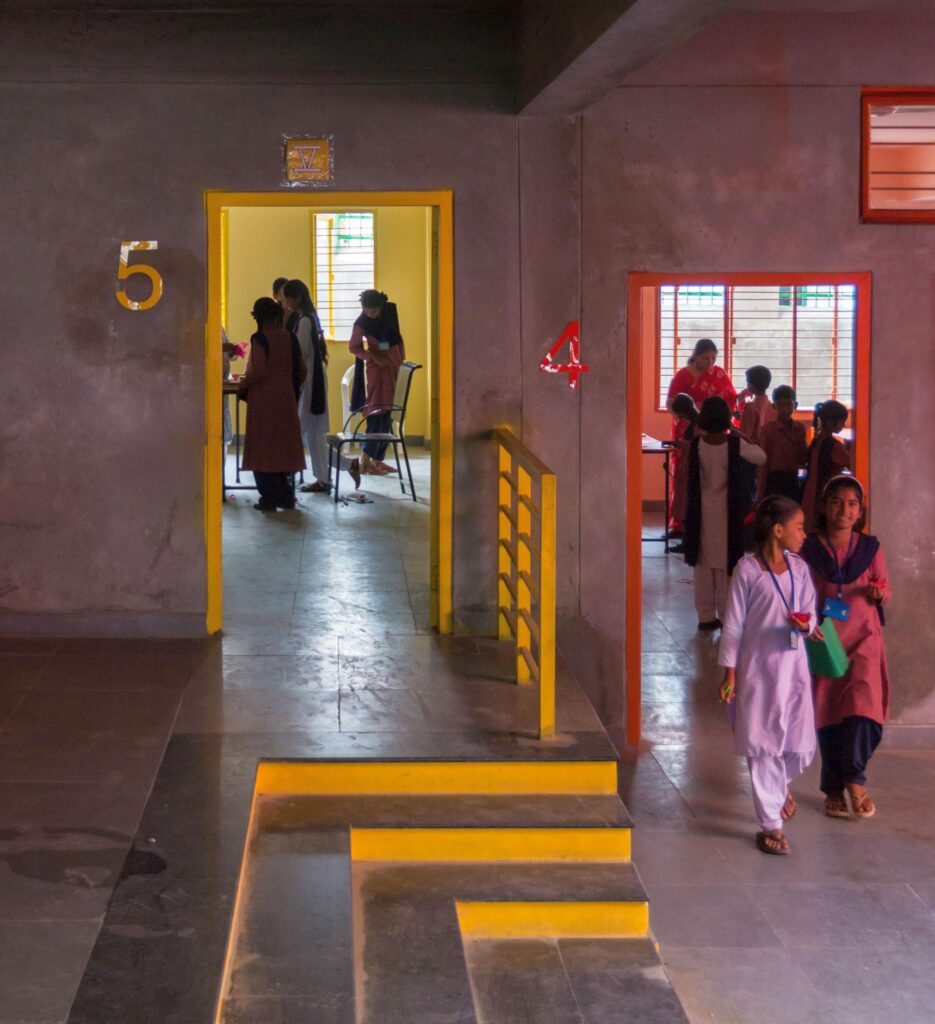
A bright red central staircase forms the spine of the building, all the way from the ground to the top floor, where the roofs of the school become play courts connected to the existing playground. At the top, the old schoolhouse has been repainted to reflect the new color scheme and converted into a dedicated kindergarten block with access to smaller play areas under the existing trees.
While the building differentiates itself from the context in terms of colour, it respects the scale of the adjoining courtyard houses by creating a smaller one at the lowest level, also in response to the scale of the students.
Each of the lowest and highest levels of the school, with a height difference of 20’ between them, has abutting streets. The top level has smaller classrooms for higher classes and is enclosed by a permeable block wall with a basketball court to the north. The trussed geometric skylight above is 80’ in length and designed using computational tools that allow for a large span for daylighting of the central core over all the levels. From its topmost level, the entire city is visible: the Golconda, the Qutb Shahi Tombs, the skyscrapers of Lanco Hills and the unchecked low-rise, high-density houses beneath.

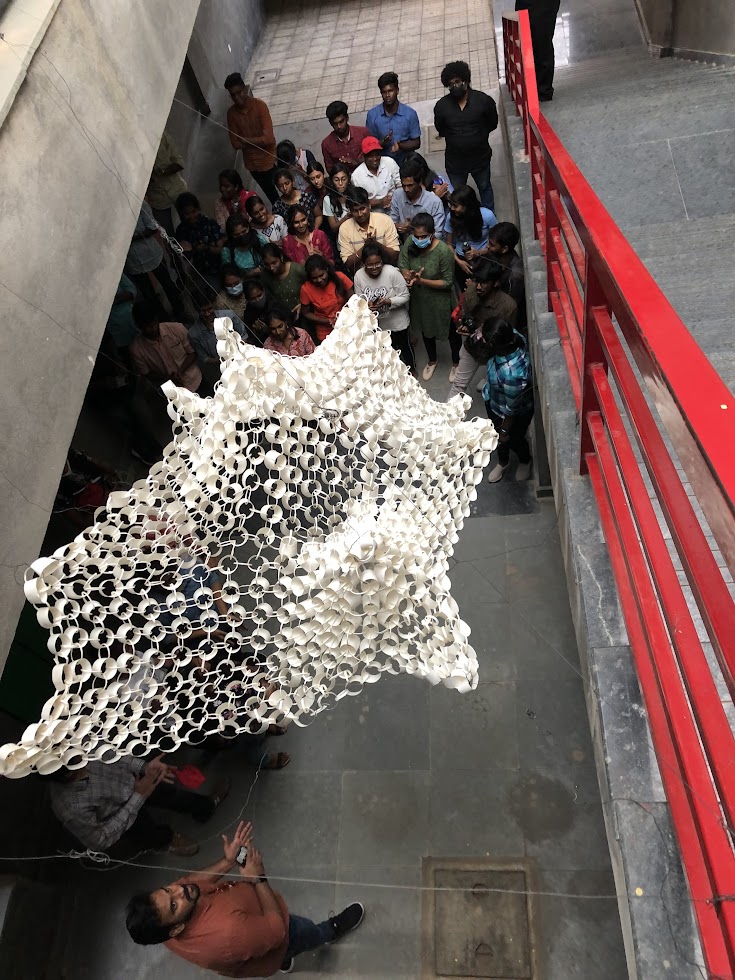

The peculiar terrain allows each level of the building to touch the ground, and are referred to as Lower Ground, Middle Ground and Upper Ground. Thus, this school can be navigated in two ways: upon entering from the bottom and exiting at the top, as well as entering from the top and exiting at the bottom. In a major departure from conventional design, the building is more experiential from the inside-out: due to the shared walls of neighbouring houses, the exterior is almost entirely hidden, and the interior opens itself up to the users.
What is unique about this project is that the architectural design was never finalized before construction. The site dictated the design process. The difficult terrain called for extensive land and geological surveys that still failed at capturing all the information about the site. Upon excavation, sheetrock and undulations were discovered in unexpected places, resulting in a design that had to evolve and adapt to the terrain. Many design revisions and decisions were done on-site during construction, producing surprising results. Due to the tight budget, the school was built incrementally, as funds were raised. But due to the pressing need for space, the spaces began to be occupied and used while the building was still under construction. This allowed us to observe the use of different spaces, the impact on users and their response in real-time, and we were able to adapt the design on the basis of this user experience data. The ensemble team working on the project was not highly-skilled and consultants devoted their time on a pro bono basis. Thus, at times, the design was delegated to workers providing physical prototypes, verbal guidelines, and sketching directly on the rock in lieu of detailed working drawings. A design-construction-use feedback loop was created to run the process, resulting in a robust built form that was not authored singularly by the architects, but collectively with the students, teachers, masons, carpenters, and fabricators: a participatory, multi-author design process.
When an architect is commissioned for the design of a space, especially one of public use, it is imperative to keep in mind the future life of the building and its evolution over time, right from the conceptual stage. The real-life of built space is its users. As we see students adapt spaces and use them in unintended ways, we understand the importance of leaving some parts of the design incomplete, to be filled in by the users. We also learn that architecture is not complete without user experience. The school has now transformed into something we could never have expected: it has become a magnet for the community, a gathering space for the distribution of meals to families in need and a makeshift clinic and awareness centre for the neighbourhood during holidays.
A school has the power to impact an entire community and to transform the lives of future generations. This project has a bigger impact than just a school building. The potential of the school is immense in educating the children, their families and the entire community. The journey has only just begun.
Floorplan



Model
Project Facts
Certification: Silver-certified Green Building by the Indian Green Building Council
Publication: RIBA Rethink Design Guide: Architecture for a Post-pandemic World (2021)
Lead Architect: Takbir Fatima
Lead Interior Designer: Abeer Fatima
Structural Design: Zedcon Consultants, Wali Quadri & Associates
Photography: Arshiya Syed, Ujjwal Sannala, Akhila Rao, Takbir Fatima, Aisha KT, Ashwin KV, Sai Udeep




























One Response